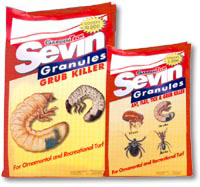The pesticide unit for manufacturing “SEVIN” (the brand name of one of the pesticides marketed by UCC) was commissioned at the Bhopal plant in 1977. It was initially operated by importing MIC (which was one of the basic chemical ingredients for manufacturing the pesticide) from the U.S. MIC was shipped to Bombay (Mumbai) in 200 litre high-quality stainless steel drums and was transported to Bhopal by road. Ever since operation of the SEVIN unit began, chemical accidents became a common feature there. On 24.11.1978, there was a huge fire in the storage area of alpha-naphthol (another chemical ingredient for manufacturing “SEVIN”), which could be controlled only after ten hours. The fire caused huge loss to the company. [18]
Production of MIC commenced at Bhopal in February 1980. On 25.12.1981, plant operator Mohammed Ashraf Khan was killed after being exposed four days earlier to a leak of phosgene gas (a highly toxic chemical ingredient for producing MIC). The UCIL management tried to shift the blame for his death on to Ashraf Khan himself by claiming that he had ignored the necessary safety precautions while carrying out repairs on one of the phosgene pipelines. However, the workers alleged that it was disregard for even basic safety procedures on the part of the head of the production department, which had resulted in Asraf Khan’s death. On 09.02.1982, another phosgene gas leak caused 16 workers to struggle between life and death for several days. UCC (USA) had first-hand knowledge of the accident, because senior executives of the company were visiting the plant on the day the accident occurred.
Due to rising incidents of accidents, a “Safety Week” was organised from 10 to 16 April 1982 at the Bhopal plant during which, according to workers’ union leader Hattim Jariwala, at least 10 accidents were reported. [19] Following the recent spate of accidents, UCC (USA) was forced to send a team of safety experts to India to carry out an Operational Safety Survey of the Carbon Monoxide, MIC and SEVIN units. In their confidential report, the UCC team, which carried out the survey in May 1982, had warned that a leak could occur due to “equipment failure, operation problems or maintenance problems.”[20] However, UCC’s “Safety Survey” team did not comment on the basic design defects in the safety systems or on the operational irregularities there, including the fact that the refrigeration unit was kept shut most of the time and was operated only intermittently at the time of transfer of MIC from the tank into the SEVIN pot.
It was Raajkumar Keswani, a Bhopal based editor and publisher of a Hindi weekly titled “Report”, who sounded the earliest clear warning of an impending catastrophe in Bhopal. In the lead article titled “Please Save This City”, which was published on 17.09.1982, Keswani tried to warn the residents of Bhopal of the imminent danger from the UCIL plant and about the possibility of a genocide being unleashed at Bhopal. Two weeks later, on 01.10.1982, Keswani published yet another warning in the same weekly with the headline: “Bhopal you are sitting on the mouth of a volcano!” But, because UCIL had such pervasive influence in Bhopal at that time, very few people were willing to heed Keswani’s unequivocal warnings. Yet the alarm that Keswani had raised was timely. On 05.10.1982, MIC did escape from a broken valve and had seriously injured four workers. People living in nearby colonies also experienced burning sensation in the eyes and had breathing trouble, because for the first time toxic gases had leaked into their homes. The residents ran away to save their lives and returned only after several hours. Luckily the leak was controlled in time before it caused further damage.[21]
Part 5 of a serialised article by N. D. Jayaprakash



